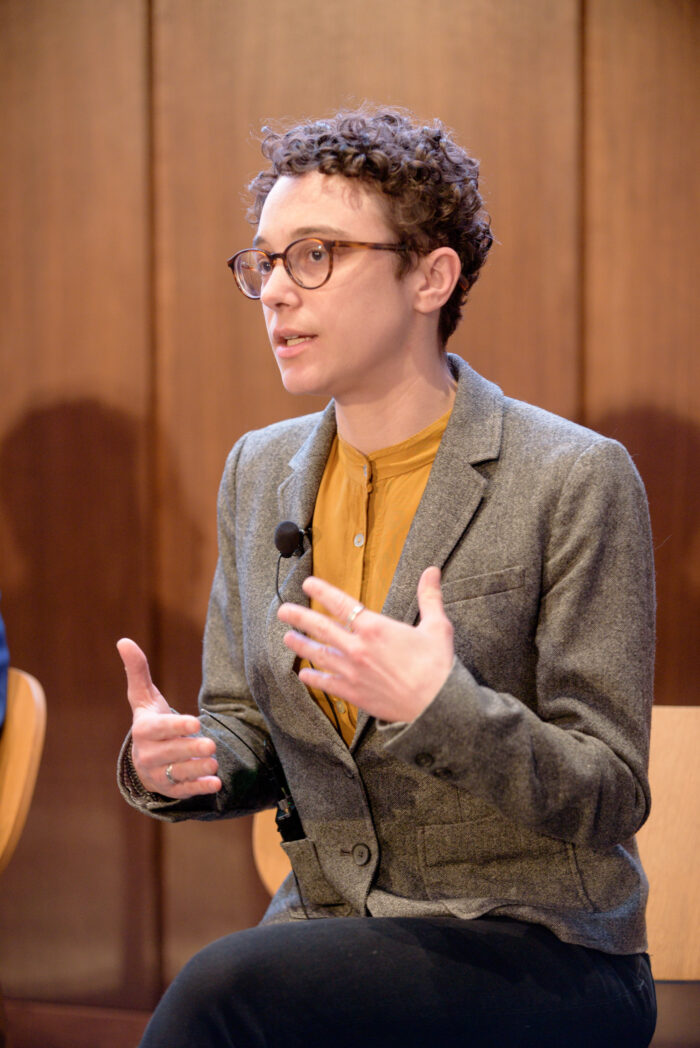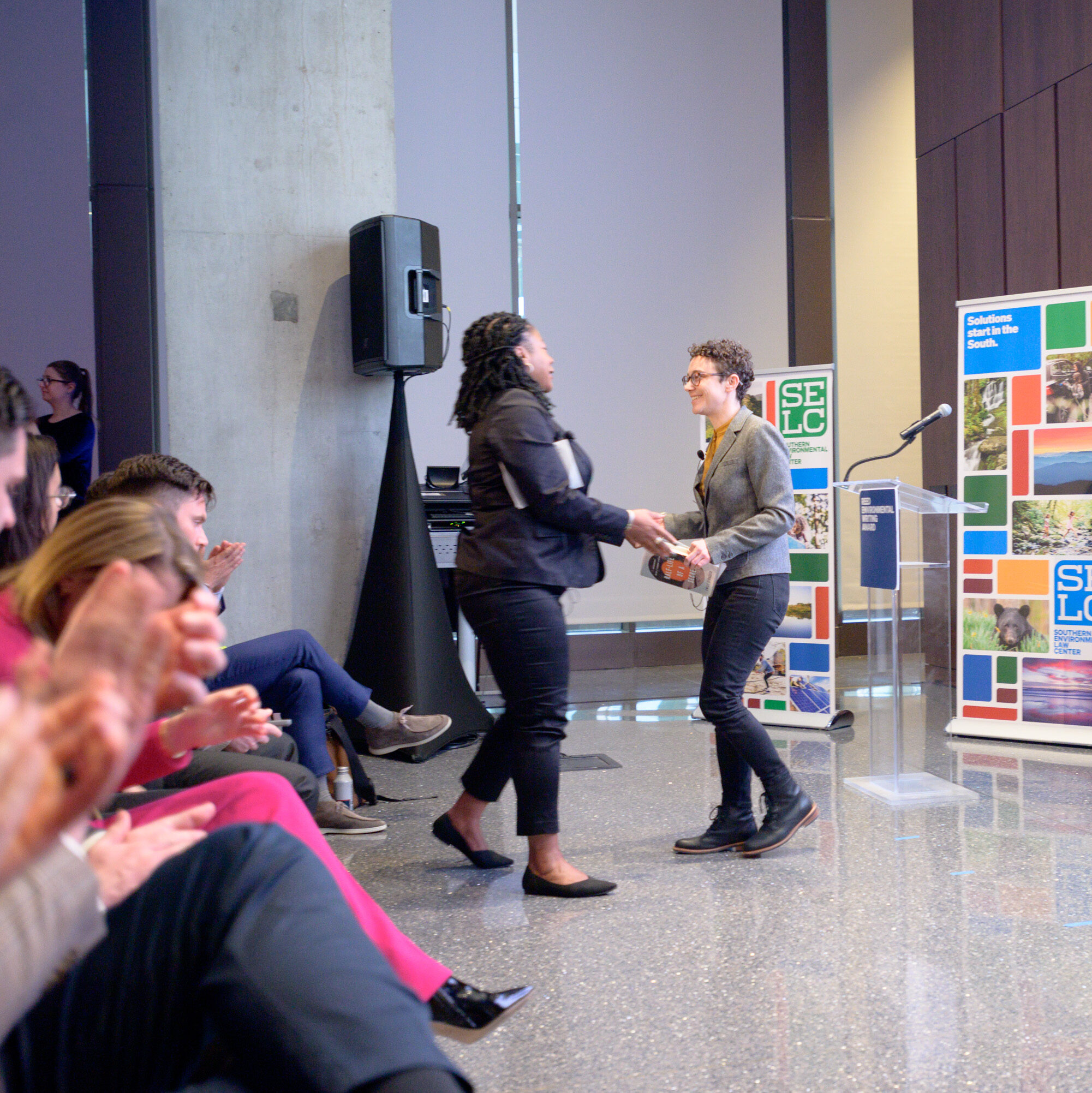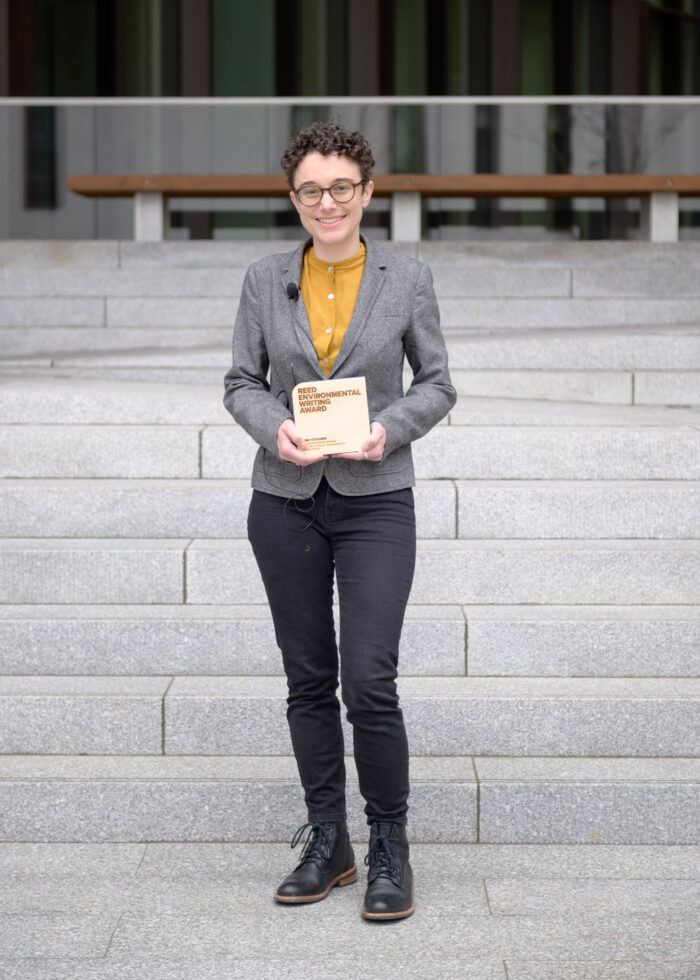Family secret reveals ties to a toxic legacy in Tennessee

Emily Strasser didn’t set out to write a book on the environmental impact of the atomic bomb on east Tennessee — a family secret led her there. After rediscovering an old photo of her grandfather at a nuclear test blast site, the enterprising writer set out on a 10-year journey that started as a personal mission and ended up revealing so much more.
In her book, “Half-Life of a Secret: Reckoning with a Hidden History,” Strasser examines the toxic legacy of Oak Ridge, Tennessee, one of three secret cities constructed by the Manhattan Project for developing the first atomic bomb. She exposes a suppressed history that forever impacted her family, a community, the nation, and the world.
We caught up with the Reed Award-winning writer to chat about compelling storytelling, grappling with her complicated family history, and her favorite place in the South.
What makes a compelling story and how did you know you had one?
I think the trick about being a writer is that you don’t always know what’s going to be compelling to someone else. You take a big leap and try something without knowing if it’s going to grab someone else. It can be very lonely and a little scary, but also exciting to be grabbed by something and start down that path.
With your book, “Half-Life of a Secret,” how did you test your idea out to see if there was interest?
I think in some ways, the Manhattan Project is an easily compelling story because it just has such a huge impact on our world and how it has unfolded since 1945. The challenge was figuring out if anyone was interested in this personal element of it. My grandfather was not a famous man. He’s not an Oppenheimer. So the risk I took was finding my way into a really big story that people are obviously interested in, but do they care what someone like me has to say about it?
The learning is that there is actually a relief and healing in airing secrets.
Emily Strasser
Did you know that you would be doing this much environmental writing in a book about nuclear weapons?

No. I didn’t go into this thinking I was doing environmental writing at all. It was a ways into my research process before I started to think that there was more here. When I was in Oak Ridge doing research, for example, I saw signs that said “uranium workers call this number for healthcare.” And I started to think, “oh yeah, what about the uranium here?” and started to research it. It’s kind of an interesting thing because most of the environmental contamination and the revelations that came out about it started coming out in the 1980s, and then Oak Ridge was designated a Superfund site in 1989. So it’s not new information, but it’s not widely known.
Will you share an impactful memory from your reporting?
Meeting sick workers and residents in Oak Ridge who have been impacted by the environmental contamination of the area was really powerful. I met some inspiring people who worked hard to advocate for cleanup programs, transparency, and workers’ compensation programs, and they were successful. There is now a compensation program for nuclear workers, which is a big deal. There is still no program for residents and the cleanup efforts are complicated, but they still achieved some significant victories.
You say that you learned from the ash spill that what’s hidden will eventually come out. Since you’ve written the book, have you had any other reflections on secrecy?
I’ve had a lot of people share that my story resonates with them, so they in turn share their personal stories with me. I’ve had people in my extended family who I didn’t know read the book and reach out and say that I’ve spoken to our family history in a way that hasn’t been done and they’ve thanked me for that. So I guess the learning is that there is actually a relief and healing in airing secrets.
What did you make of your grandfather saying that no one should have access to nuclear weapons?

I wish I could ask him that. It’s a really radical statement to make for someone who spent his entire career building nuclear weapons, and it’s really confusing that he didn’t say it to anyone but my mom. It’s a big puzzle to me, but it doesn’t drastically shift the way that I understand who he was.
What’s your favorite place to get outside in the South?
The place I always think about is my grandmother’s house in east Tennessee on Watts Bar Lake, which is a piece of the Tennessee River. It’s a landscape with rolling hills, small farms, and fence lines overgrown with wildflowers, wild blackberries, queen lace, and black-eyed Susans. There are old wooden farmhouses that are falling into disrepair, board by board until they just go back into the earth. You see deer appearing suddenly at the edge of the woods and winding country roads. It’s a place I think of not without complication because of its history.
What are you reading right now?
I’m reading “Weather” by Jenny Offill. It’s about someone in our time grappling with the existential crisis of climate change.
